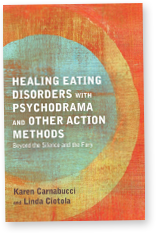*American College of Sports Medicine Guidelines:
1. CARDIOVASCULAR (AEROBIC) EXERCISE:
3-5 Times per week 20-60 Minutes per session
At 60-85% of Maximum Heart Rate – This is called the Target Heart Rate Zone. Read more
1. CARDIOVASCULAR (AEROBIC) EXERCISE:
3-5 Times per week 20-60 Minutes per session
At 60-85% of Maximum Heart Rate – This is called the Target Heart Rate Zone. Read more
1. Avoid “all or nothing” thinking. Keep the American College of Sports Medicine Guidelines* as a goal, but remember, every little bit helps. A 5 minute walk is better than 5 minutes of sitting. Little by little we go far.
2. Don’t think of exercise as “one more thing to do”, rather, think of being a little more active in the time you have. For example, take the stairs for 1 -2 flights instead of the elevator; take a “walk break” instead of a coffee break. Stretch as you watch the news. Be active with your spouse, children, friends: meet for a walk or workout instead of going out for a meal. Get a pedometer and gradually increase your steps. Read more
1. Practice positive self-talk: “I am worthy of healthy behavior. I deserve to take time to exercise.”
2. Avoid “all or nothing” thinking. For example, don’t say, “I only have 10 minutes for exercise – why bother?” Every 10 minutes helps to build a regular routine and relieve stress. Read more
 Contact us to schedule this event with a link to my email address.
Contact us to schedule this event with a link to my email address.
In our book on healing eating disorders we emphasize the benefits of a holistic approach to the treatment of issues such as disordered eating, body dissatisfaction, related mood disorders and more. Action methods which involve the body as well as the mind, heart, and spirit are particularly effective and lend themselves to collaboration with several other modalities which we explore in our book: art, music, mindfulness, Reiki and other energy work, acupuncture, yoga, and more. Case studies and a variety of examples illustrate a number of creative options.
The ancient practice of meditation is making news! The use of modern brain imaging technology shows that an individual’s brain has a natural “set point” for good and bad moods, with greater activity on the left front side of the brain associated with “happy – calm”. Greater activity on the right side is associated with stress, anxiety, and worry. Read more
Mail
Healing Bridges
4 Bateau Landing
Grasonville, MD 21638
USA
Phone:
410-827-8324 (fax is the same)
